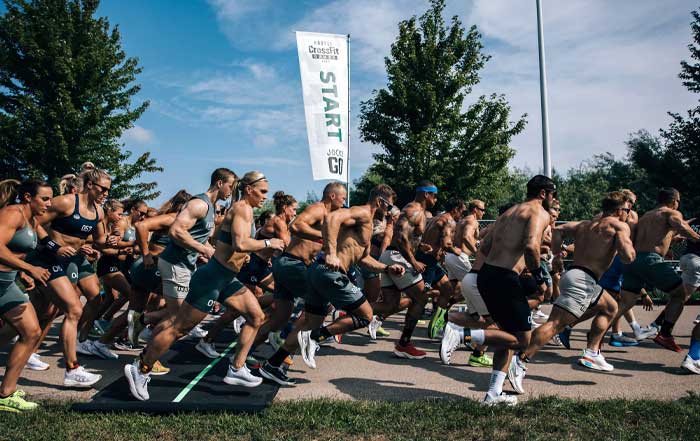The global fitness industry has seen fast developments over the past decade, with international fitness competitions emerging as a significant catalyst for change and these competitions, ranging from bodybuilding events to CrossFit Games and Ironman triathlons, have not only captivated audiences worldwide but have also spurred substantial growth and innovation within the industry. As these events gain prominence, they are reshaping market dynamics, influencing consumer behavior, and driving economic growth on an international scale.
One of the most notable impacts of international fitness competitions is the surge in their popularity and participation rates. Historically, fitness competitions were niche events with limited audiences, often confined to bodybuilding enthusiasts or elite athletes. However, the modern landscape has shifted dramatically. Competitions like the CrossFit Games have turned fitness into a spectator sport, attracting thousands of participants and millions of viewers globally. This widespread appeal is evident in the increasing number of countries hosting and participating in these events, reflecting a growing global interest in competitive fitness.
Economically, the influence of international fitness competitions on the industry is profound. The global health and fitness club market was valued at over $96 billion in 2019, according to the International Health, Racquet & Sportsclub Association (IHRSA). Fitness competitions contribute significantly to this market size through event revenues, sponsorships, merchandise sales, and broadcasting rights. Major events attract substantial corporate sponsorships, with brands eager to associate themselves with the health and vitality that these competitions represent.
The ripple effect of these competitions extends to the fitness equipment and apparel markets. As athletes prepare for and compete in these events, there is an increased demand for specialized equipment and high-performance apparel. According to a report by Grand View Research, the global fitness equipment market size was valued at $10.2 billion in 2020 and is expected to expand at a compound annual growth rate (CAGR) of 3.6% from 2021 to 2028. The apparel segment is also thriving, with consumers seeking out the latest in fitness fashion and technology to enhance their performance and emulate their athletic idols.
Supplement and nutrition industries are experiencing parallel growth, fueled by the competitive fitness culture that emphasizes optimal performance and recovery. Athletes and fitness enthusiasts alike are investing in supplements to gain a competitive edge, leading to a robust market expansion. The global sports nutrition market size was estimated at $15.6 billion in 2019 and is projected to reach $35.35 billion by 2027, growing at a CAGR of 10.9%, as reported by Allied Market Research. This surge is attributed to increased awareness of health and fitness, influenced heavily by the visibility of international competitions.
Gyms and fitness centers are adapting to this competitive trend by diversifying their offerings to cater to aspiring athletes. There is a noticeable shift towards functional training spaces, specialized classes, and coaching services that prepare individuals for competition-level performance. This adaptation is reflected in membership statistics; the IHRSA reported that global gym memberships exceeded 183 million in 2018, and while the pandemic affected physical attendance, the interest in fitness has remained strong, with many facilities integrating virtual training options.
Social media and digital platforms play a pivotal role in amplifying the impact of international fitness competitions. Athletes leverage these platforms to build personal brands, engage with fans, and attract sponsorships. The influence of fitness influencers extends beyond entertainment; they shape consumer preferences and drive trends in fitness products and services. Brands are investing heavily in digital marketing strategies, with influencer partnerships becoming a key component of their promotional activities.
The globalization of fitness culture is another significant outcome of the rise in international competitions. These events transcend geographical boundaries, bringing together diverse cultures united by a common passion for fitness. This global interconnectedness fosters the exchange of ideas, training methodologies, and cultural perspectives on health and wellness. The proliferation of competitions in different regions also stimulates local economies and encourages community engagement in fitness activities.
However, the growth of international fitness competitions is not without challenges and criticisms. Concerns have been raised about the potential negative impacts on participants' health due to extreme training regimens and the use of performance-enhancing substances. Additionally, there is scrutiny over the commercialization of fitness and the pressure it places on individuals to achieve unrealistic body standards. The industry faces the task of promoting healthy competition while safeguarding the well-being of its participants.
Looking ahead, the future of the fitness industry appears intrinsically linked to the evolution of international competitions. Technological advancements, such as virtual reality and wearable tech, are poised to enhance the spectator experience and athlete performance. The industry is expected to continue its growth trajectory, with a focus on inclusivity and accessibility. Initiatives to promote amateur participation and grassroots competitions are likely to broaden the industry's appeal and foster a new generation of fitness enthusiasts.
In conclusion, international fitness competitions have become a driving force in reshaping the fitness industry. Their influence spans economic growth, market diversification, cultural globalization, and technological innovation. By capturing the imagination of a global audience and setting new standards for athletic performance, these competitions are redefining what it means to engage with fitness, both as participants and spectators. The industry stands at the cusp of further transformation, propelled by the enduring appeal of competition and the universal pursuit of health and excellence.

